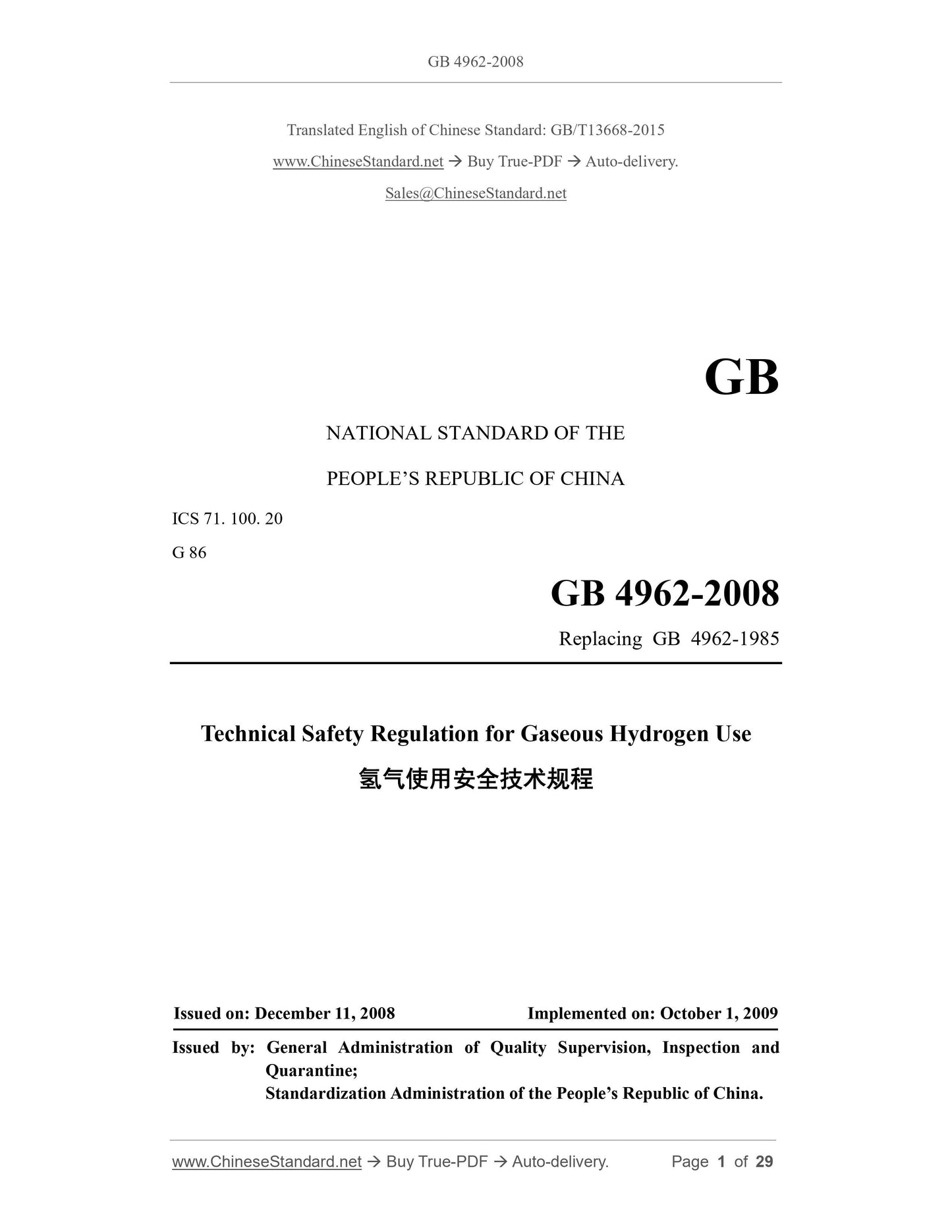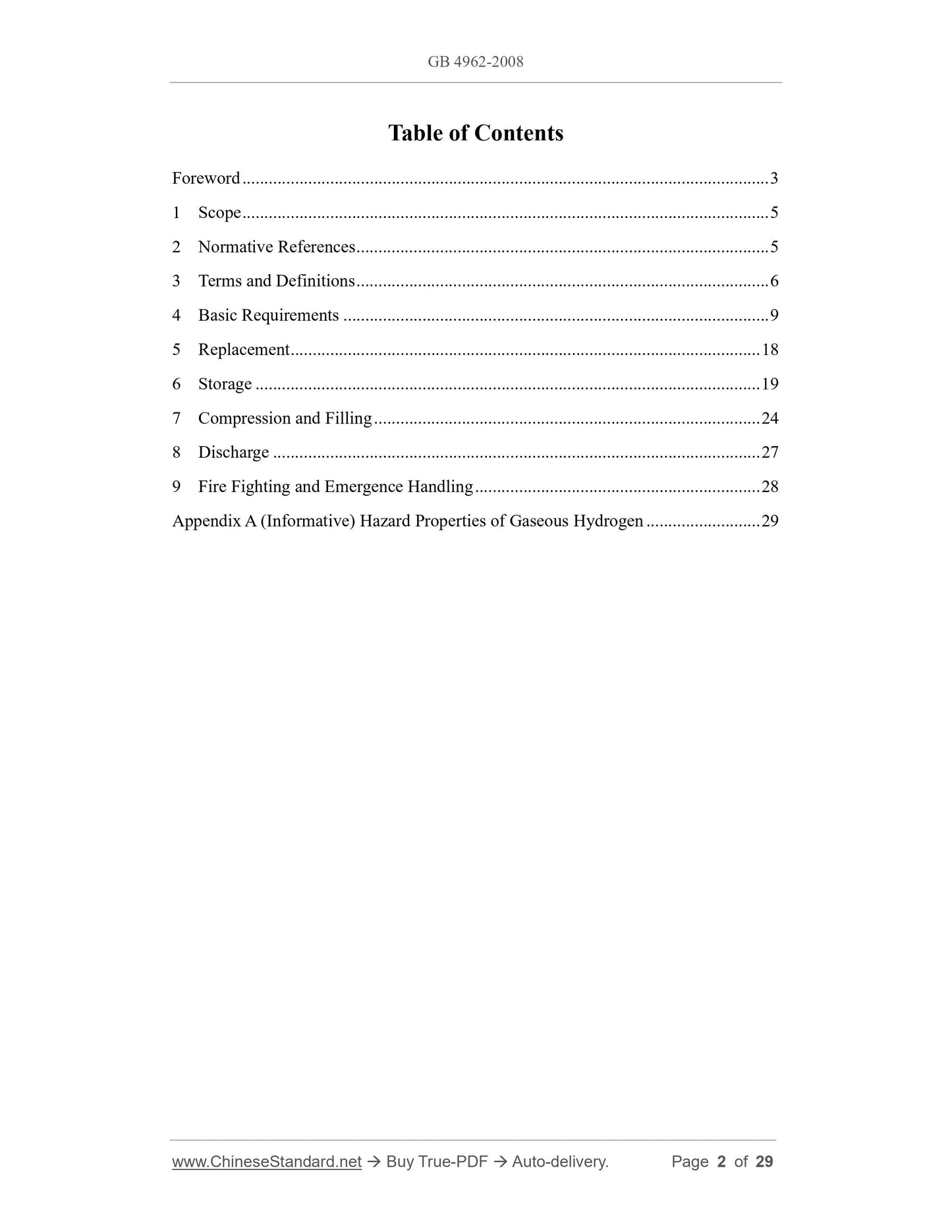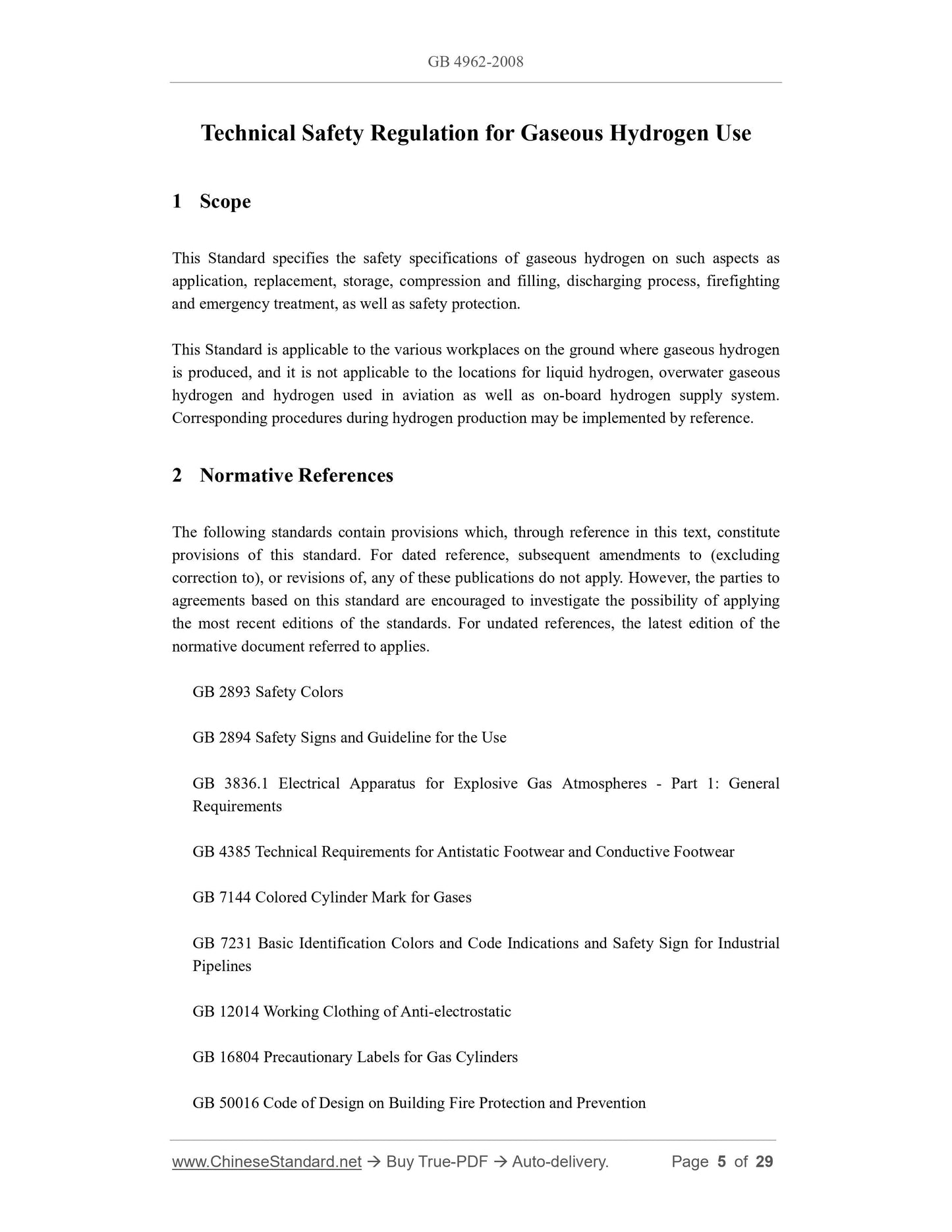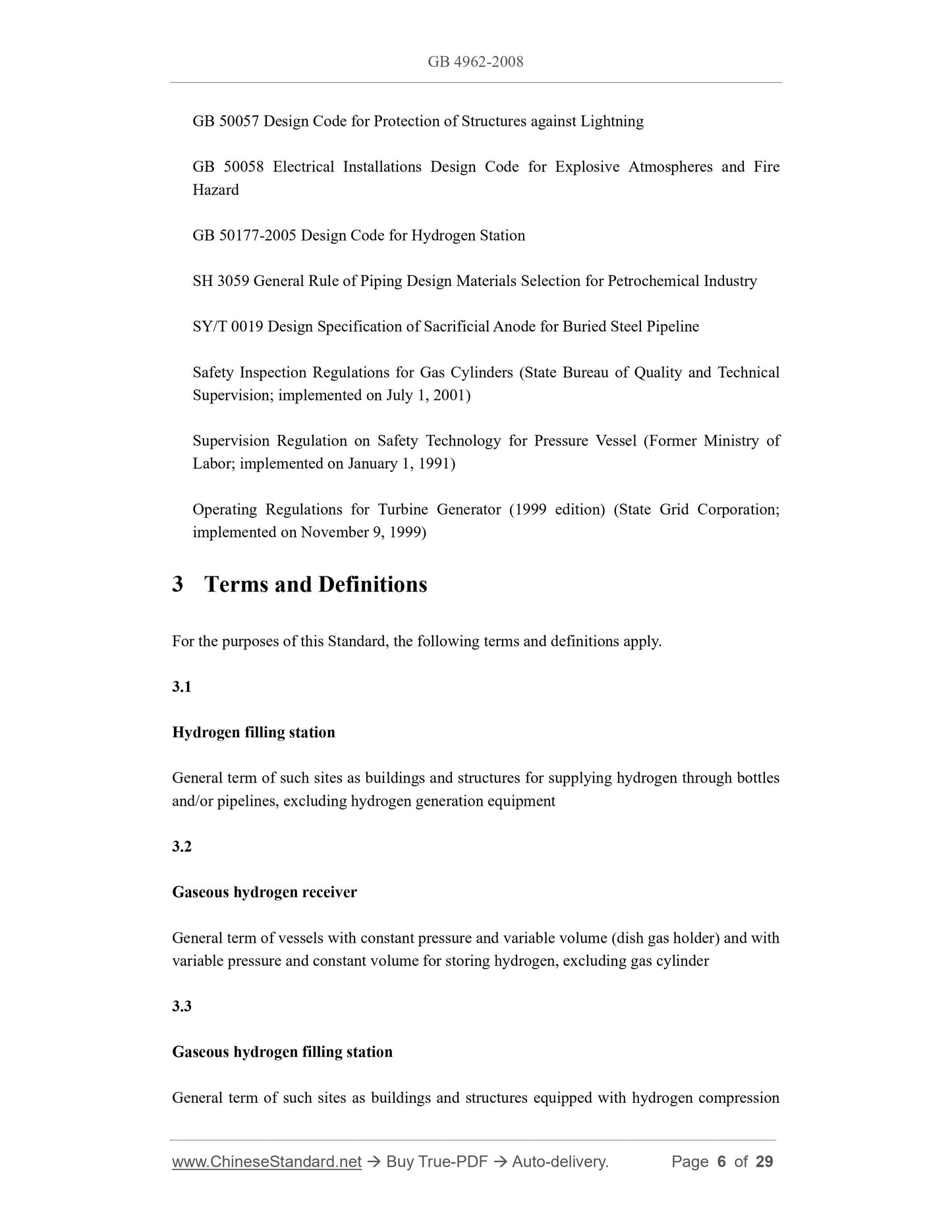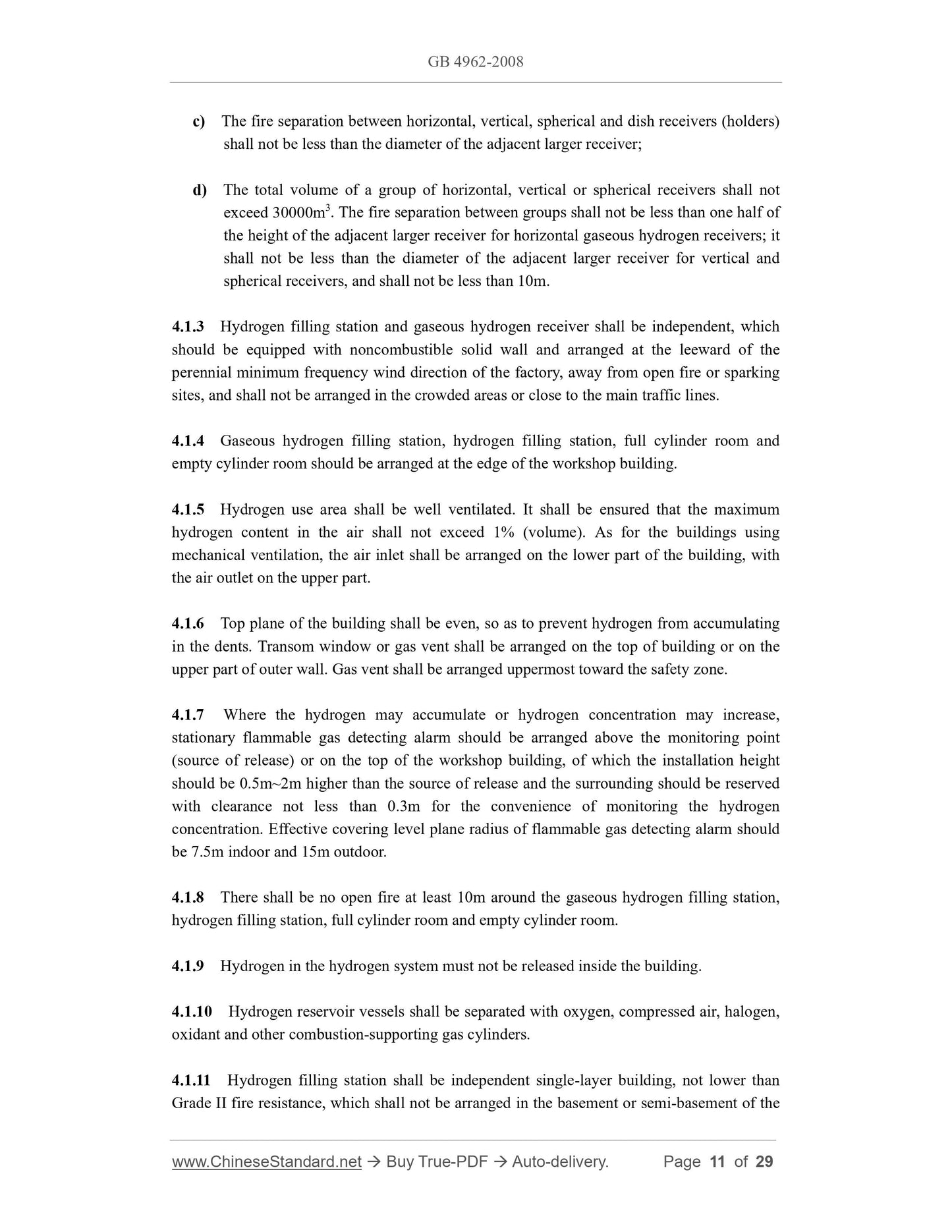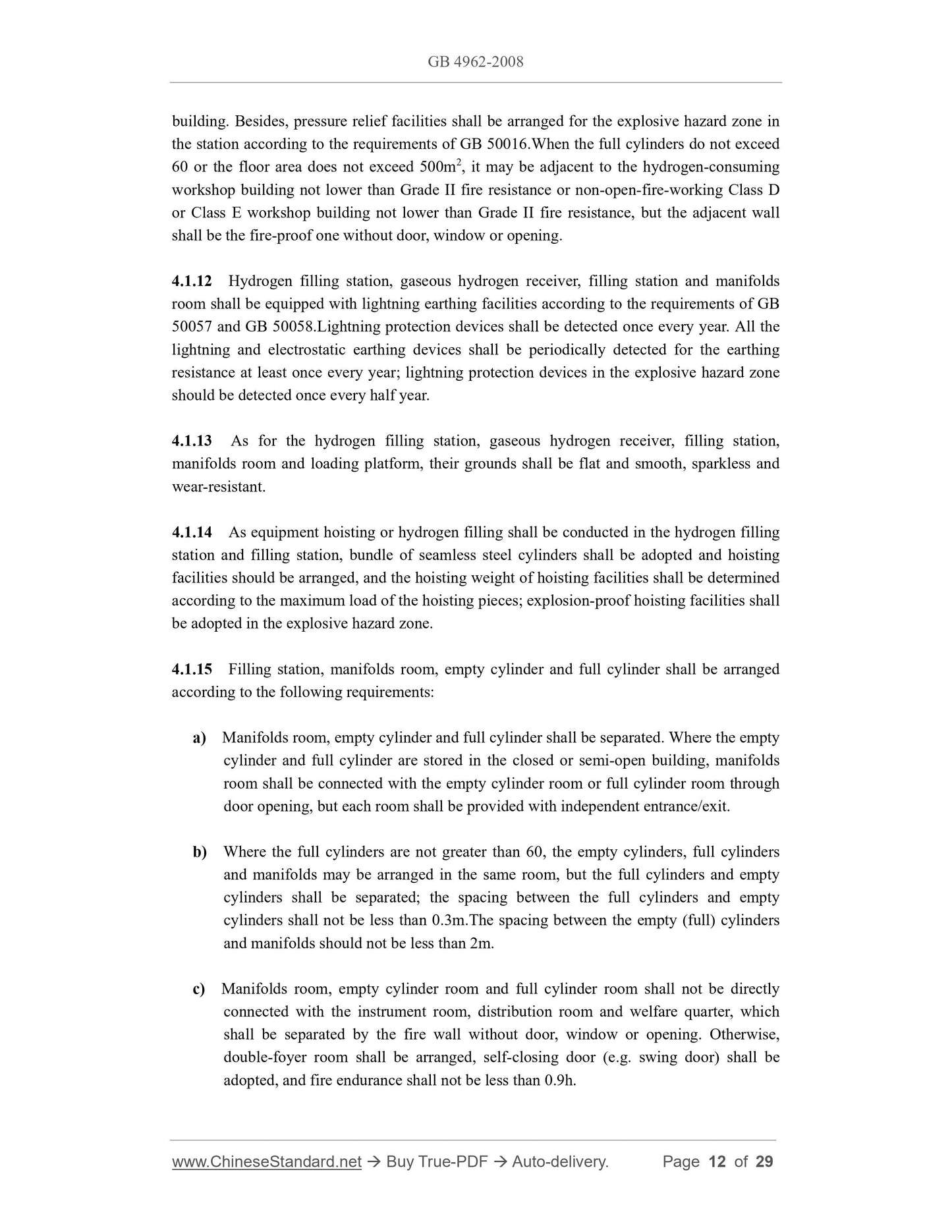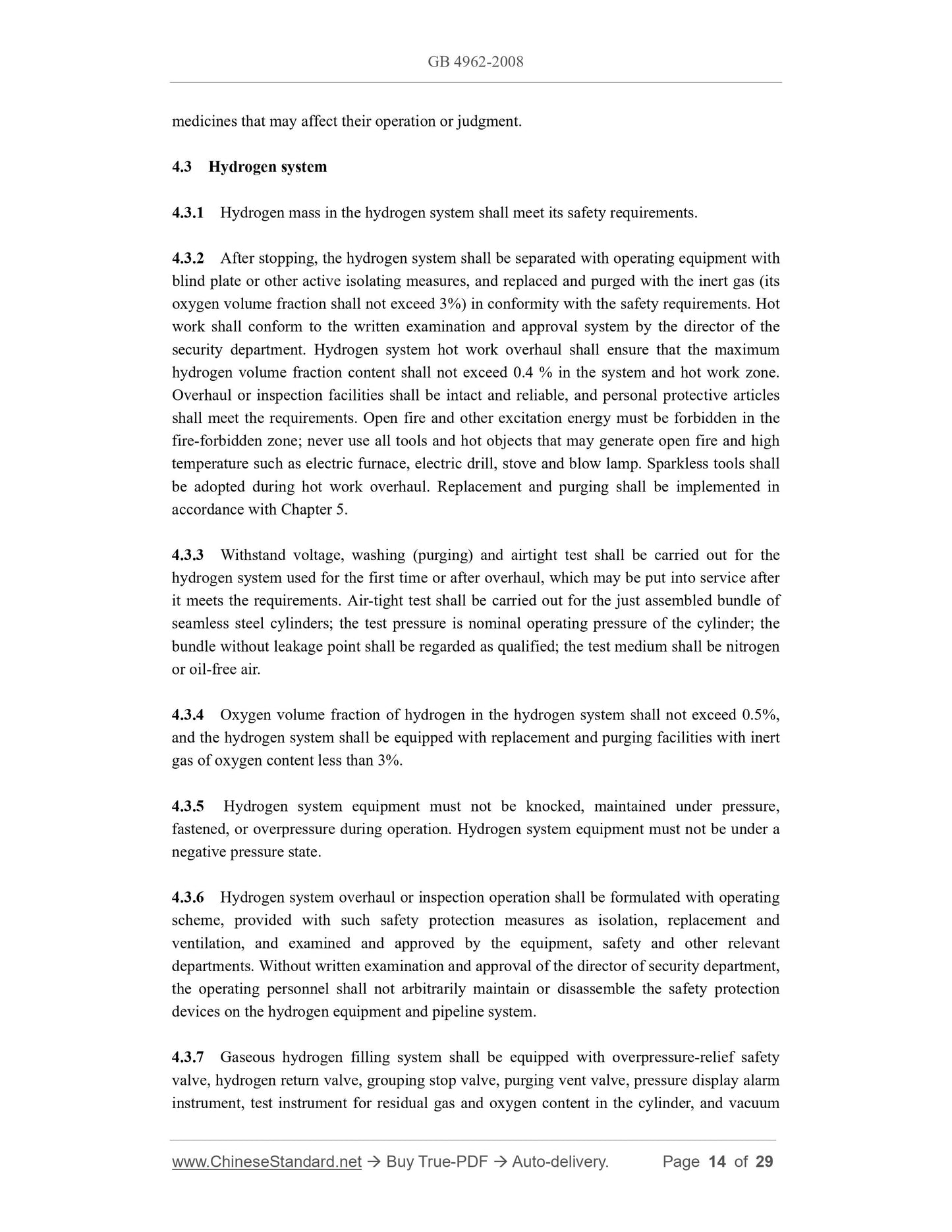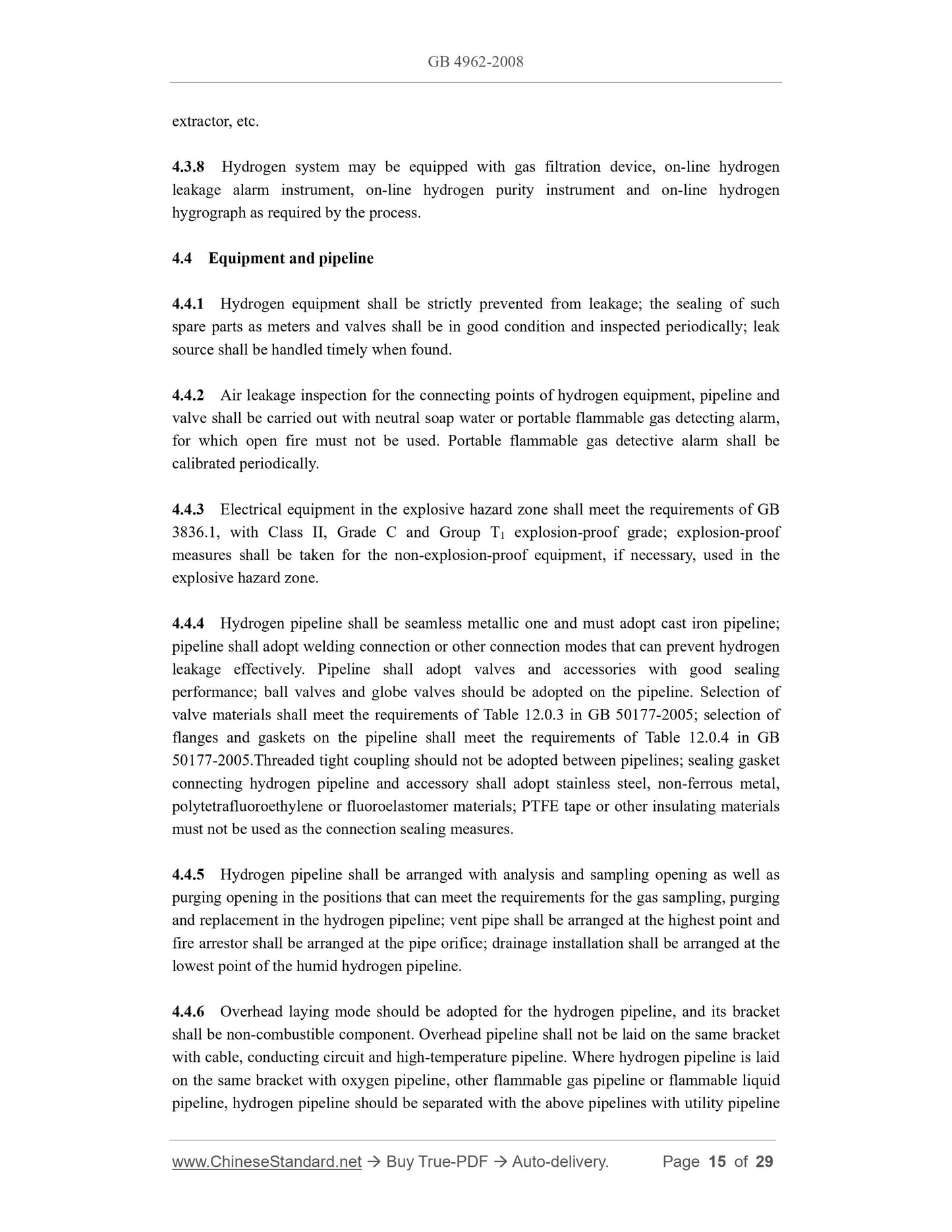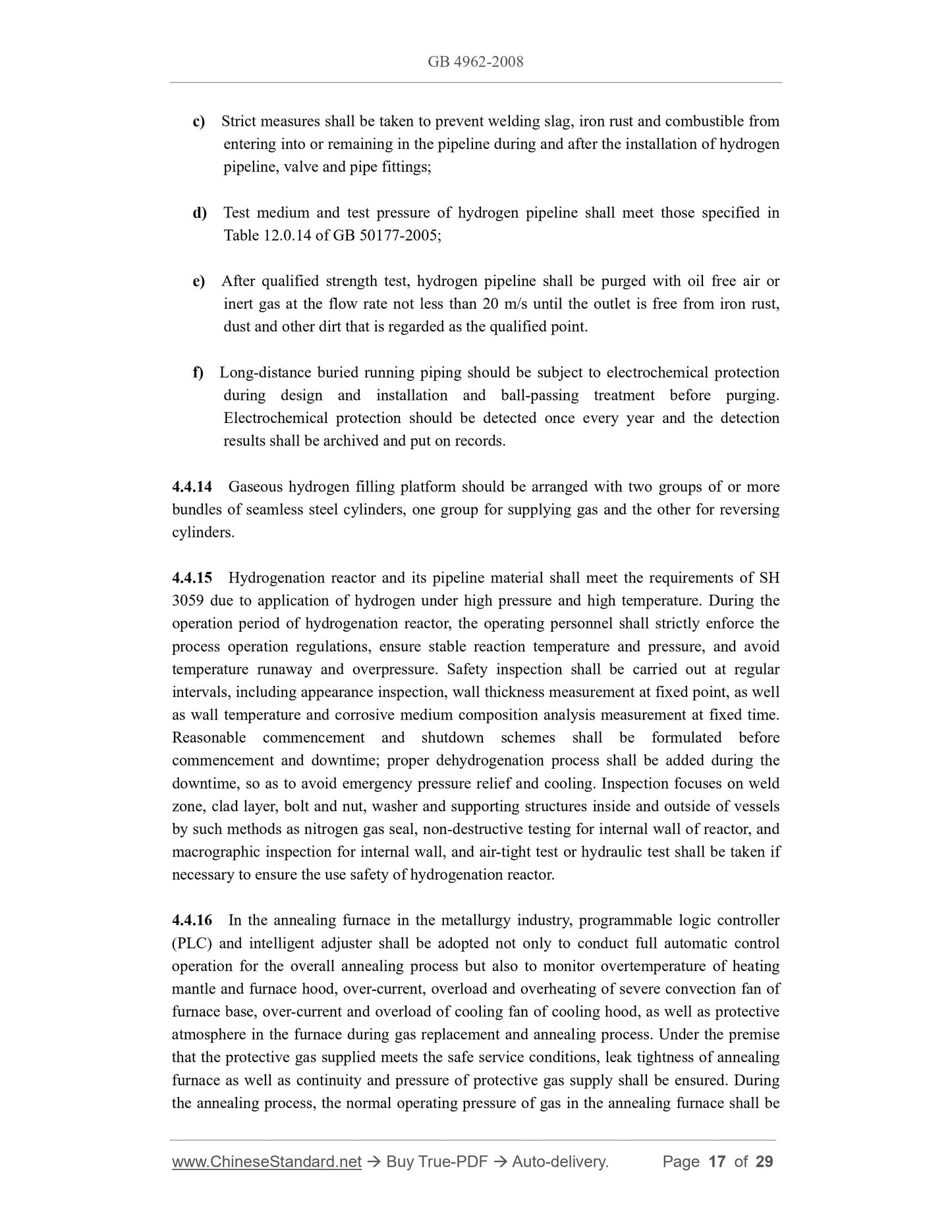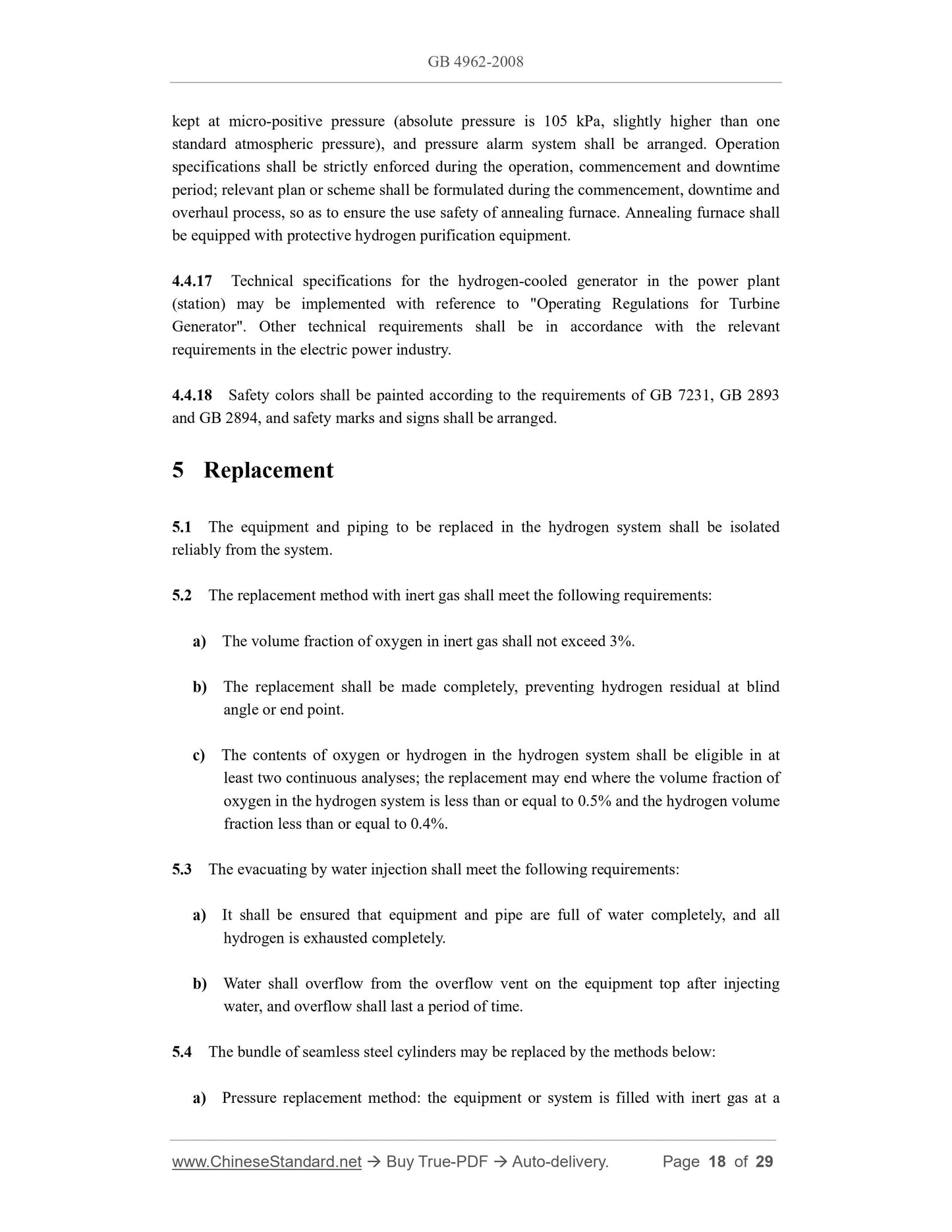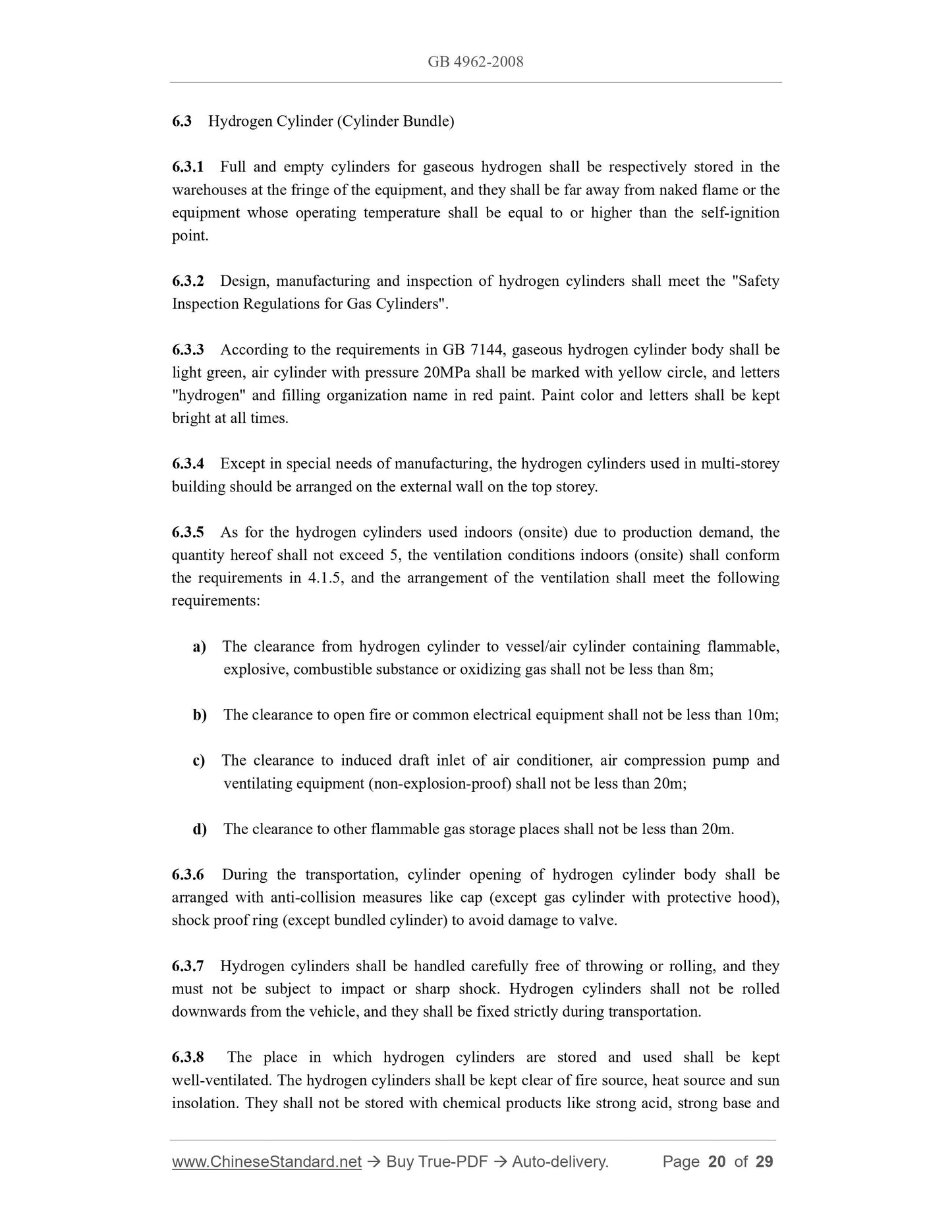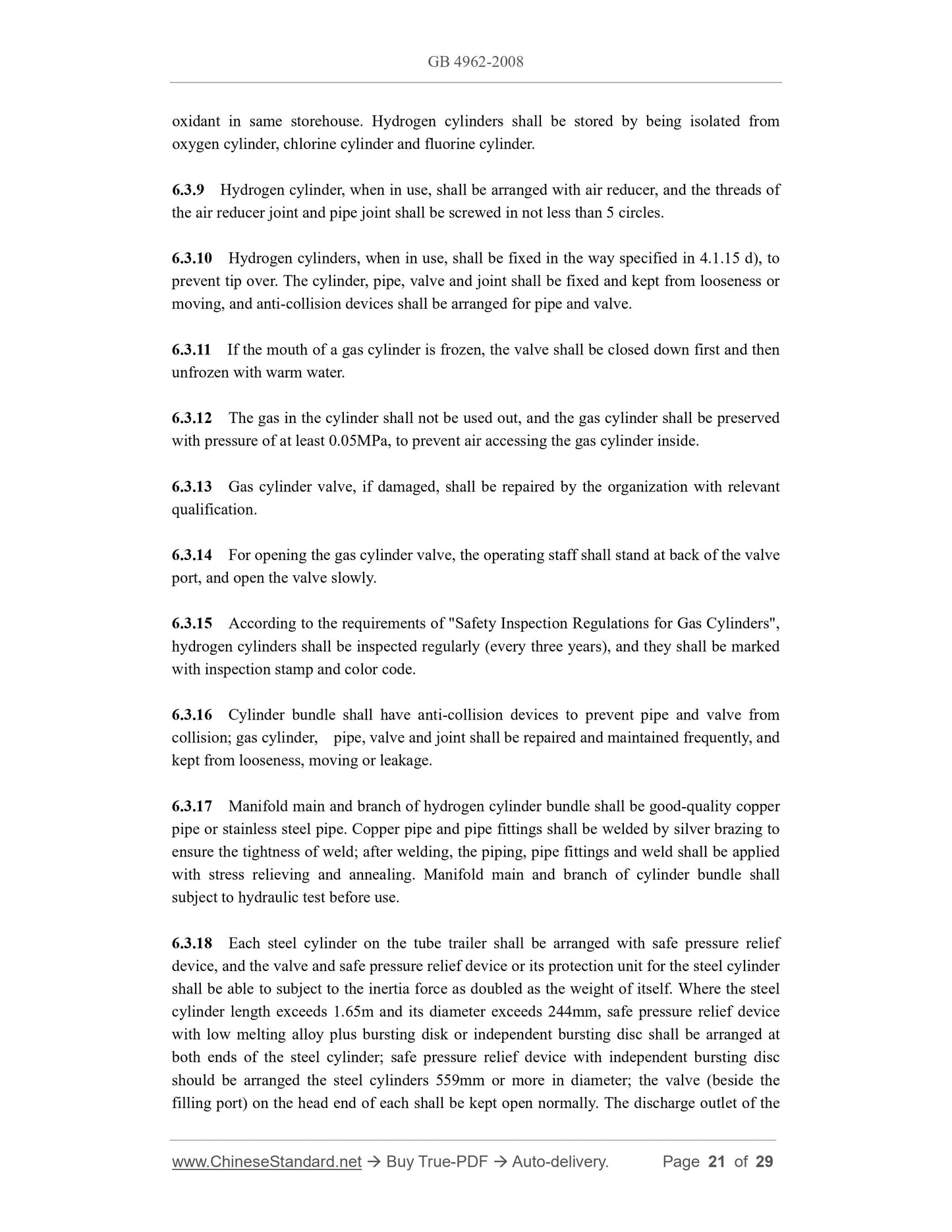1
/
of
12
www.ChineseStandard.us -- Field Test Asia Pte. Ltd.
GB 4962-2008 English PDF
GB 4962-2008 English PDF
Regular price
$255.00
Regular price
Sale price
$255.00
Unit price
/
per
Shipping calculated at checkout.
Couldn't load pickup availability
GB 4962-2008: Technical safety regulation for gaseous hydrogen use
Delivery: 9 seconds. Download (and Email) true-PDF + Invoice.Get Quotation: Click GB 4962-2008 (Self-service in 1-minute)
Newer / historical versions: GB 4962-2008
Preview True-PDF
Scope
This Standard specifies the safety specifications of gaseous hydrogen on such aspects asapplication, replacement, storage, compression and filling, discharging process, firefighting
and emergency treatment, as well as safety protection.
This Standard is applicable to the various workplaces on the ground where gaseous hydrogen
is produced, and it is not applicable to the locations for liquid hydrogen, overwater gaseous
hydrogen and hydrogen used in aviation as well as on-board hydrogen supply system.
Corresponding procedures during hydrogen production may be implemented by reference.
Basic Data
| Standard ID | GB 4962-2008 (GB4962-2008) |
| Description (Translated English) | Technical safety regulation for gaseous hydrogen use |
| Sector / Industry | National Standard |
| Classification of Chinese Standard | G86 |
| Classification of International Standard | 71.100.20 |
| Word Count Estimation | 16,122 |
| Date of Issue | 2008-12-11 |
| Date of Implementation | 2009-10-01 |
| Older Standard (superseded by this standard) | GB 4962-1985 |
| Quoted Standard | GB 2893; GB 2894; GB 3836.1; GB 4385; GB 7144; GB 7231; GB 12014; GB 16804; GB 50016; GB 50058; GB 50177-2005; SH 3059; SY/T 0019; Gas Cylinder Safety Supervision (National quality and Technical Supervision July 1, 2001 implementation); pressure Vessel safety Technology Supervision (former Ministry of Labor January 1, 1991 implementation); turbine operating procedures (1999 Edition)(national power Corporation standard 1999 11 September implementation); GB 50057 |
| Regulation (derived from) | Announcement of Newly Approved National Standards No. 19 of 2008 (No. 132 overall) |
| Issuing agency(ies) | General Administration of Quality Supervision, Inspection and Quarantine of the People's Republic of China, Standardization Administration of the People's Republic of China |
| Summary | This Chinese standard specifies the use of gaseous hydrogen, replacement, storage, compression and filling (filling) loading, discharge process as well as fire and emergency management, safety aspects of the safety requirements. This standard applies to the production of gaseous hydrogen on the ground after each workplace, does not apply to liquid hydrogen, water gaseous hydrogen, air and car with hydrogen sites for hydrogen systems. Hydrogen production in the corresponding links may refer to. |
Share
